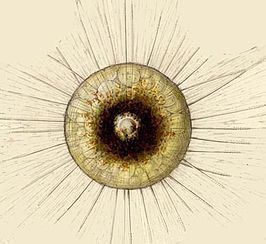Domain Eukaryota Higher classification Eukaryote | Scientific name Bikonta | |
 | ||
Similar | ||
Anna bikont the crime and the silence
A bikont ("two flagella") is any of the eukaryotic organisms classified in the group Bikonta. Many single-celled members of the group, and the presumed ancestor, have two flagella.
Contents
- Anna bikont the crime and the silence
- Euglena bikont flagella movement
- Enzymes
- Relationships
- Cladogram
- References
Euglena bikont flagella movement
Enzymes
Another shared trait of bikonts is the fusion of two genes into a single unit: the genes for thymidylate synthase (TS) and dihydrofolate reductase (DHFR) encode a single protein with two functions.
The genes are separately translated in unikonts.
Relationships
Some research suggests that a unikont (a eukaryotic cell with a single flagellum) was the ancestor of opisthokonts (Animals, Fungi, and related forms) and Amoebozoa, and a bikont was the ancestor of Archaeplastida (Plants and relatives), Excavata, Rhizaria, and Chromalveolata. Cavalier-Smith has suggested that Apusozoa, which are typically considered incertae sedis, are in fact bikonts.
Relationships within the bikonts are not yet clear. Cavalier-Smith has grouped the Excavata and Rhizaria into the Cabozoa and the Archaeplastida and Chromalveolata into the Corticata, but at least one other study has suggested that the Rhizaria and Chromalveolata form a clade.
Cladogram
An up-to-date "classical" cladogram is
However, an even more up-to date cladogram with the root in Excavata is
The corticates correspond roughly to the bikonts. While Haptophyta, Cryptophyta, Glaucophyta, Rhodophyta, the SAR supergroup and viridiplantae are usually considered monophyletic, Archaeplastida may be paraphyletic, and the mutual relationship between these phyla are still to be fully resolved.
Recent reconstructions placed Archaeplastida and Hacrobia together in an "HA supergroup" or "AH supergroup", which was a sister clade to the SAR supergroup within the SAR/HA supergroup. However, this seems to have fallen out of favor as the monophyly of hacrobia has come under dispute.
